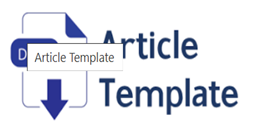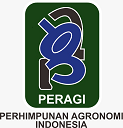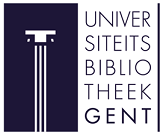Bridging Sorghum Yield Gap Through Up-Scaling Improved Technology in Wag-Himira Zone, Ethiopia
Abstract
Up-scaling of improved sorghum production practices (Sorghum technology, hereafter) was carried out for three years to bridge the yield gaps in dry-land areas. It was explicitly aimed to create wider technology demand among major stakeholders. Their roles and linkages were also acknowledged to make technology diffusion viable. The new technology was promoted for 264 farmers; planting and related agronomic practices were done as per the package. Results revealed that the new technology had a 116.6% yield advantage over the local sorghum production practice. The technological gaps among the new and local practice were 1400 and 988.7 kg ha-1 for grain and straw yields, respectively. The technological index (53.8%) also proved that sorghum production would increase through tamping the extension networks, on top of up-to-date technology usage. despite, 83.6% of the farmers were applied the full technology package, 68.3% of them described as it was tough due to its labor-intensive nature. Labor shortage, lack of experience and technological obscurity of studied farmers were defies for complete technology package use. To bridge sorghum yield gaps sustainably, the new technology should further scale-out to other similar areas via founding robust-enough stakeholder linkage, and demand-driven distribution.
Keywords
Full Text:
PDFReferences
Abady, S., Liku, G. and Yadeta, D. (2017). Participatory Varietal Selection and Evaluation of Twelve Sorghum (Sorghum bicolor (L.) Moench) Varieties for Lowlands of Eastern Hararghe. International Journal of Plant Breeding and Crop Science, 4, 281-285. © www.premierpublishers.org.
Berhane, G. (2012). Effect of Tillage and Fertilizer Practices on Sorghum Production in Abergelle Area, Northern Ethiopia. Momona Ethiopian Journal of Science, 4, 52-69. https://doi.org/10.4314/mejs.v4i2.80116
Brhane, G., Belay, F., Gebreselassie, T. and Desta, D. (2019). Enhancing Sorghum Yield through Demonstration of Improved Sorghum Varieties in Tanqua-Abergelle Wereda, Central Zone of Tigray, Ethiopia. Journal of Agricultural Extension and Rural Development, 11, 11-16. https://doi.org/10.5897/JAERD2018.1020
Dayakar, R.B., Patil J.V., Nirmal, R.K., Soni, V.K. & Srivatsava, G. (2014). Sorghum: an emerging cash crop consumer acceptability of processed RTC/RTE health foods. Cambridge University Press India Pvt. Ltd., pp. 20–30.
FAOSTAT. (2013). Database of agricultural production. Rome: Food and Agriculture Organization of the United Nations. http://faostat.fao.org/default.aspx [accessed Nov, 2022]
Gebretsadik, R., Shimelis, H., Laing, M.D., Tongoona, P. and Mandefro, N. (2014). A diagnostic appraisal of the sorghum farming system and breeding priorities in Striga infested agro-ecologies of Ethiopia. Agricultural Systems, 123, 54–61.
Kinfe, H. and Tesfaye, A. (2018) Yield Performance and Adoption of Released Sorghum Varieties in Ethiopia. Edelweiss Applied Science and Technology, 2, 46-55. https://doi.org/10.33805/2576.8484.115
Mihiretu, A. (2019). Participatory evaluation and promotion of improved Bread wheat technology in the dry lands of Wag-lasta, Ethiopia: challenges and Prospects. J. Ext. Educ, 31 (4), 6370–6380. https://doi.org/10.26725/JEE.2019.4.31.6370-6380
Mihiretu, A., Asefa, N. & Wubet, A. (2019). Participatory evaluation of sorghum technologies in the marginal dryland zones of Wag-lasta, Ethiopia. Cogent Food Agric. 5, 1671114. https://doi.org/10.1080/23311932.2019.1671114
Mihiretu, A., Eric, N. & Lemma, T. (2021). Awareness of climate change and its associated risks jointly explain context-specific adaptation in the Arid-tropics, Northeast Ethiopia. SN Soc Sci, 1, 51. https://doi.org/10.1007/s43545-021-00066-0
Siyum, N., A. Giziew, A. Anteneh, J.H. Purba, H. Mossie, E. Adem. (2023). Farmers’ Varietal Perception towards Improved Bread Wheat Technologies in Ethiopia: an Implication for Bread Wheat Technology Development. Agro Bali : Agricultural Journal, 6(2): 361-377. https://doi.org/10.37637/ab.v6i2.1148
Solomon, H., Miruts, F., Seyoum, A. and Endalamaw, C. (2021). Promotion of Improved Sorghum Technologies through Large-Scale Demonstration in Gololcha Woreda, Arsi Zone of Oromia Regional State, Ethiopia. American Journal of Plant Sciences, 12, 366-375. https://doi:10.4236/ajps.2021.123023
Tesfahun, G., Maleni, D., Gwara, S. and Emana, B. (2013). Efficiency of moisture stress risk coping strategies in north eastern Ethiopia: application of mean-variance efficiency analysis. Asian Economic and Financial Review, 3, 1018–1032.
Yadav, D. B., Kamboj, B. K. & Garg, R. B. (2004). Increasing the productivity and profitability of sunflower through front line demonstrations in irrigated agro ecosystem of eastern Haryana. Haryana Journal of Agronomy, 20 (1–2), 3335.
Zewde, A.A., and J.H. Purba. (2022). Rate of stripe rust (Puccinia striiformis) on wheat in the highland and lowland area. Journal of Agriculture and Applied Biology, 3(1): 62-69. https://jaabjournal.org/index.php/jaab/article/view/190
http://dx.doi.org/10.11594/jaab.03.01.07
Refbacks
- There are currently no refbacks.



























